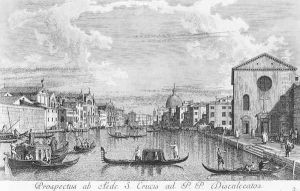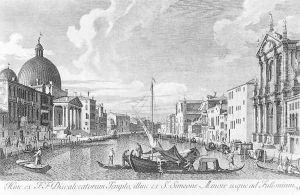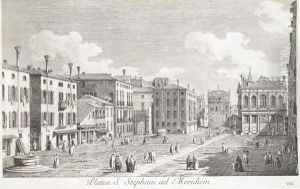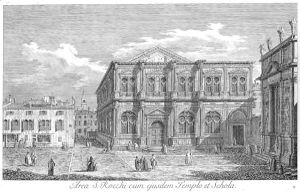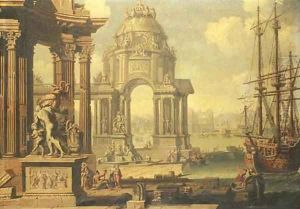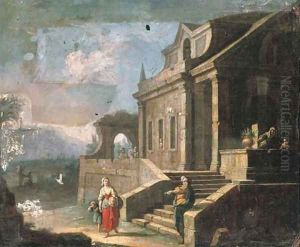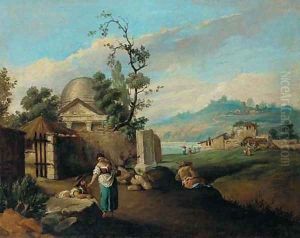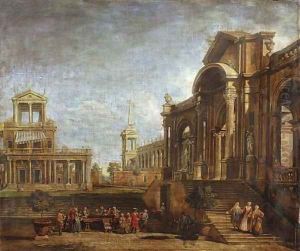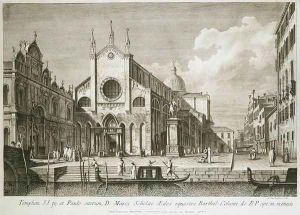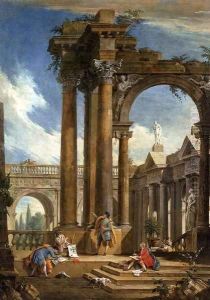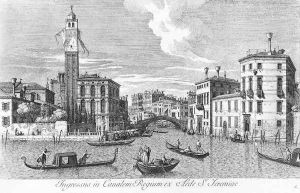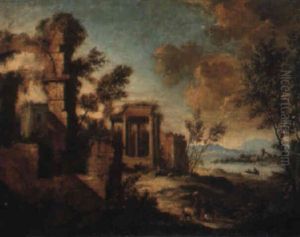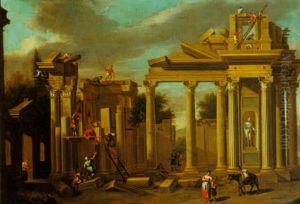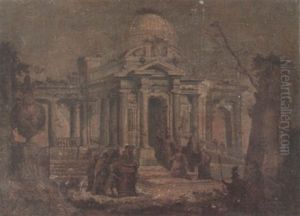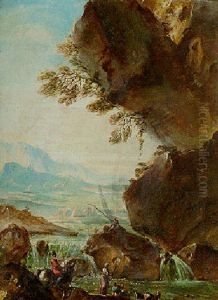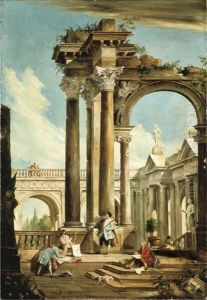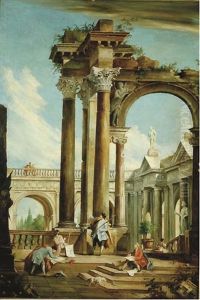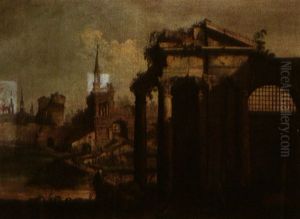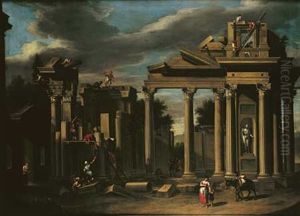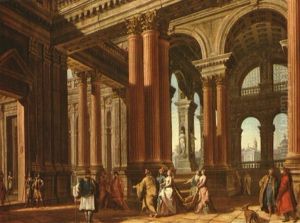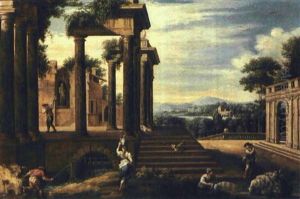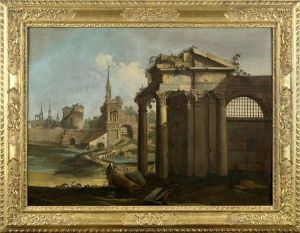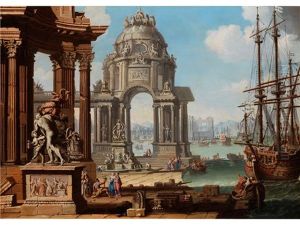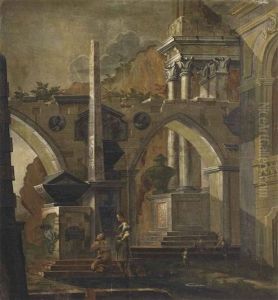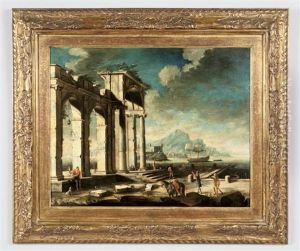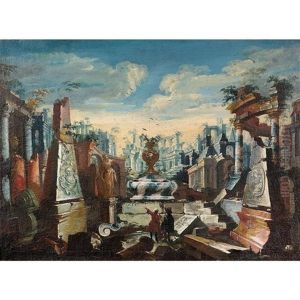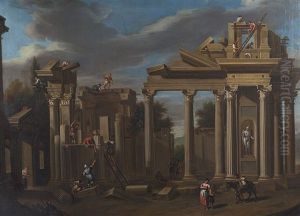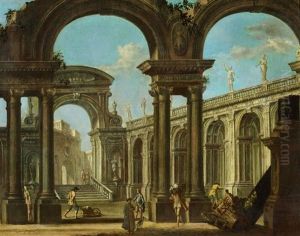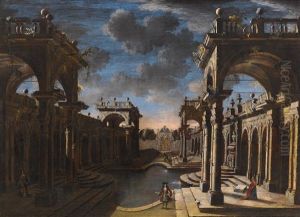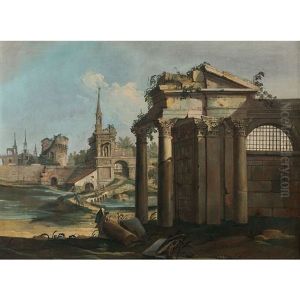Antonio Visentini Paintings
Antonio Visentini was an Italian architectural designer, engraver and painter, known for his architectural fantasies and vedute, which are detailed prints or paintings depicting cityscapes. Born on November 21, 1688, in Venice, he initially trained under the painter Giovanni Antonio Pellegrini. He is best known for his collaborations with the British consul in Venice, Joseph Smith. Smith was an avid collector and patron of the arts and Visentini worked closely with him, producing engraved views of Venice after the paintings of Canaletto, another illustrious Venetian artist of the time. These engravings helped to spread Canaletto's fame across Europe.
Visentini's work reflects the Rococo style, which was prevalent in Europe during the 18th century. Apart from his engravings, Visentini was involved in architectural projects in Venice. He took on a number of commissions to design façades and reconstruct buildings in the neoclassical style, which was gaining popularity towards the latter half of his career.
Antonio Visentini is also noted for his role as a teacher; he was a professor of perspective at the Accademia di Belle Arti di Venezia. His contributions to the fields of engraving, painting, and architecture, as well as his academic influence, make him a notable figure in the Venetian art scene of the 18th century. He continued to work and teach until his death in Venice on June 26, 1782.
